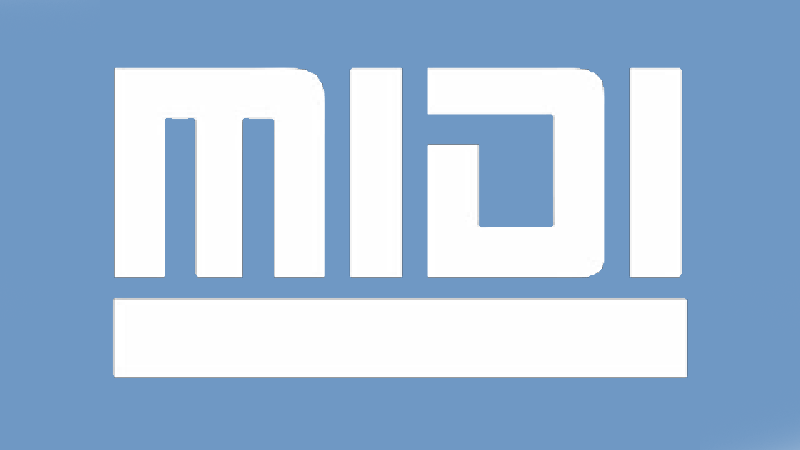MIDI was introduced at the 1983 NAMM show as a means to connect various electronic instruments together. Since then, our favorite five-pin DIN has been stuffed into Radio Shack keyboards, MPCs, synths, eurorack modules, and DAWs. The standard basically hasn’t changed. Sure, we have MIDI SysEx messages to configure individual components of a MIDI setup, but at its core, MIDI hasn’t changed since it was designed as a current-loop serial protocol for 8-bit microcontrollers running at 1 MHz.
Now, ahead of the 2019 NAMM show, the MIDI Manufacturers Association (MMA) in conjunction with AMEI, Japan’s MIDI Association, are announcing MIDI 2.0. The new features include, “auto-configuration, new DAW/web integrations, extended resolution, increased expressiveness, and tighter timing”. It will retain backwards-compatibility with MIDI 1.0 devices.
The new initiative, like the release of the first MIDI spec, is a joint venture between manufacturers of musical instruments. The company lineup on this press release is as follows: Ableton/Cycling ’74, Art+Logic, Bome Software, Google, imitone, Native Instruments, Roland, ROLI, Steinberg, TouchKeys, and Yamaha.
This is not an official announcement of the MIDI 2.0 specification. This is the ‘prototyping’ phase, where manufacturers implement the MIDI 2.0 spec as envisioned, write some documentation, figure out what the new logo will look like, and design a self-certification process. Prototyping is expected to continue through 2019, when the final MIDI 2.0 spec will be released on the MIDI Association website.
As far as hardware hackers are concerned, there shouldn’t be any change to your existing MIDI implementation, provided you’re not doing anything new. It should be backwards compatible, after all. The new spec will allow for increased range in expression and ‘tighter’ timing, which might be an indication that the baud rate of MIDI (31,250 baud +/- 1%) may change. There’s some interesting things in store for the last old-school physical layer in existence, and we can’t wait to see what comes out of it.















People still use MIDI ?? It’s been at least a decade since I touched a synthesizer, but I would assume everything is ethernet now no? It’s like 1 billion times faster ground loop isolated, can go the length of an entire stadium, and free on most CPUs. Please tell me what I’ve missed.
Yes, MIDI as a protocol is still used, Also from a electrical standpoint too . Keyboards sold today may still sometimes have the 5-pin din MIDI as well as USB, most Digital DJ interfaces (Pioneer, Numark etc) are MIDI over USB. It’s also used beyond audio as a control standard for some devices and even has translators , A example would be QLC+ which has MIDI -> arnet /MIDI – >DMX and vice versa. It’s simplicity is the key, It’s just a serial protocol so even a lowly 8 bit MCU can speak MIDI.
You are only thinking about the physical standards in MIDI (and yes, most MIDI exists in software layers, USB, ethernet, etc anymore). MIDI actually encapsulates a full standard for instrument communication. It’s one of those rare standards that have been around for ages yet no one has really updated it much because it so fantastically well designed. It is still the universal standard for a syncing a wide variety of playback, performance, and recording devices.
Also musicians often value old instruments. Ethernet’s probably still heavy to be the only replacement physical layer though. Something like SPI would be available on even MCU-grade chips and still orders of magnitude faster than UART.
RTP-MIDI and OSC are still much more complex and expensive to implement, and serial MIDI is still good enough for most uses.
I use MIDI to sync all my hardware synths with eachother
MIDI uses optocouplers. Seems ground loop isolated to me.
except if you have ground loop through DIN connector shielding, but i guess you can have the same with shielded ethernet…
Midi would not exist without Dave Smith of Sequential Circuits.
https://m.youtube.com/watch?v=Jq6_vy4Pcwk
Already? Seems soon, I dunno.
what’s next? DMX1024?
Why is Google involved?
Probably because of Android
Also Web MIDI in Chrome.
I’ve been wating for Web Midi for ages… does it include SysEx support?
Yes it does, novation already uses webmidi for some of thier products – https://components.novationmusic.com/
@ Wombora: so it does! That’s the best news I’ve had in years.
Actually all of Google, Microsoft, and Apple are in the MIDI manufacturers association for keeping computer OS support up to date. There tends to be software developers in it as well, it’s not just hardware makers.
Though I’m not sure why Google was singled out in the listing above.
I am all for better support on Android for music hardware, its an iPad dominated market and I’d like some cheaper options hope this leads to that.
I’d go with a messaging system of some sort, like AMQP or so, with broacast and publish/subscribe schemes, to be able to match all those worlds…
Personally I think a messaging protocol may be to heavy for the application. At the core MIDI needs to be low latency and real time. I would think that if you add in that kind of functionality you would increase hardware cost without adding much value. What problem do you think it would solve? (honest question)
I CANT WAIT FOR BETTER MIDI 2.0!
Less mechanical sounding?